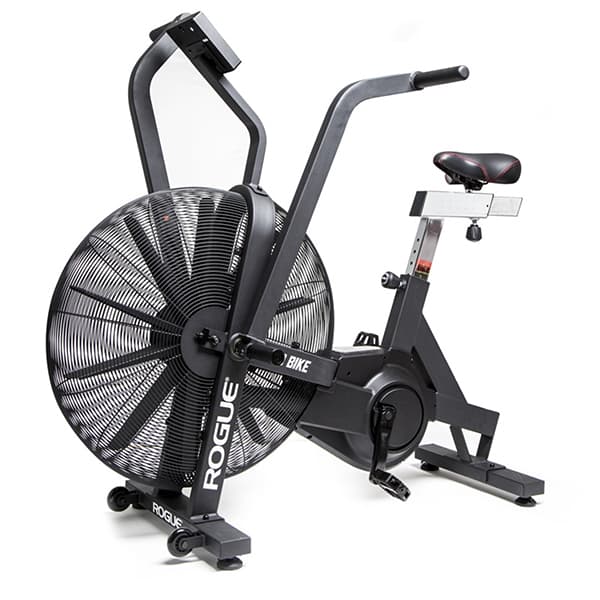Are you trying to decide between circuit training vs HIIT and feeling a bit puzzled about which one to choose?
You want a workout that’s like a Swiss Army knife: quick, does the job, and doesn’t leave you benched with an injury or feeling like toast.
In this guide, we’ll unpack the showdown between circuit training vs HIIT, setting you up to pick the right workout for your goals.
In This Article
- What is Circuit Training?
- What is HIIT?
- Differences Between Circuit Training and HIIT
- Benefits of Circuit Training
- Benefits of HIIT
- Getting Started with Circuit Training
- Mastering HIIT Workouts
- Finding Your Ideal Workout: Circuit Training vs HIIT
- Frequently Asked Questions: Circuit Training vs HIIT
- Wrapping It Up: Circuit vs. HIIT
What is Circuit Training?
When designing workout options, I’ve found that circuit training stands out for its unique structure.
It’s a dynamic workout that combines exercises to boost endurance, strength, and aerobic fitness. It’s designed to push your body in short, intense bursts, alternating with periods of lighter activity or rest.
One circuit typically includes six to ten exercises completed one after another in a “circuit” without stopping.
Here’s how it works:
- One Exercise Set: Complete a set of one exercise like push-ups.
- Quick Switch: Without resting, move to the next exercise, like squats.
- Continuous Circuit: Keep going without breaks until you’ve done all exercises in the circuit.
You can tailor the exercises to meet different goals and adjust the intensity to suit your needs. It’s an efficient and fun way to get fit, even with friends!
What is HIIT?
HIIT stands for High-Intensity Interval Training, and it’s a workout style that packs a punch.
HIIT is great for people who want to save time but still want to get a good workout. These workouts are usually short, around 20 to 30 minutes, but they can give you similar results to a longer workout.
The aim is to feel like you’re putting in a solid 7 out of 10 effort-wise, getting your heartbeat to around 80% of its maximum.
Here’s a look at what a typical HIIT session involves:
- Warm-Up: Prepares your body and prevents injuries.
- High-Intensity Intervals: Exercises like sprints or burpees push you near your limit.
- Recovery: Short rests or lighter activities follow intense bursts.
- Repeat: Alternate between high-intensity and recovery to keep your heart rate up throughout the workout
One of the best things about HIIT is the afterburn effect. It keeps your body burning calories even after you’re done, which can help you lose fat and improve your endurance.
If you’re new to HIIT, it’s important to start slowly.
Differences Between Circuit Training and HIIT
Fitness has two well-known styles of training: circuit training vs HIIT (high-intensity interval training).
Circuit training is focused on performing exercises with low intensity over a longer period, while HIIT is centered around short bursts of high-intensity exercise.
Here’s a quick breakdown of their differences:
- Duration: HIIT workouts are typically shorter than circuit training.
- Intensity: HIIT demands more intense bursts of activity.
- Recovery: Shorter, active recovery periods characterize HIIT, while circuit training may have slightly longer rests or lower-intensity exercises in between.
- Exercise Variety: Circuit training often incorporates a wider range of exercises in one session.
From my own experience, I’ve found that both styles of training work pretty well. But which one I choose depends on what my current training goals might be.
If I’m looking to build endurance and target multiple muscle groups, then circuit training is the way to go.
When I want to boost my cardio and muscle endurance, I usually go for HIIT workouts. Like when I was getting ready for a Spartan Race, HIIT was my top choice for challenging myself and building up my endurance.
Knowing these differences helps me pick the right kind of training to meet my fitness goals. I can choose to do circuit training HIIT, or even a mix of both, whatever works best for me.
Kickstart your fitness journey from home with the TRX All In One Home Gym Bundle, an all-inclusive set that caters to both beginners and seasoned athletes, making it the ultimate choice for versatile workouts.
Buy Now On AmazonBenefits of Circuit Training
Circuit training is an efficient way to get in shape, strengthening your heart, lungs, and muscles. It’s highly customizable, allowing you to tailor workouts to your personal goals, like boosting your cardio endurance.
Here’s how I’ve personally benefited from incorporating circuit training:
- I tailor my sessions with different exercises to target specific muscle areas.
- My workouts blend strength training with cardio, which makes me well-rounded.
- I have the flexibility to use a range of equipment, from treadmills to free weights.
It’s a time-efficient approach that’s both enjoyable and efficient.
Each session is dynamic and comprehensive, hitting numerous fitness goals in one go. This helps me stay adaptable and well-rounded.
Benefits of HIIT
If you want to improve your fitness, there’s a type of workout called High-Intensity Interval Training (HIIT) that can be helpful.
One great thing about HIIT is that it can make your heart healthier.
According to a 2019 study, incorporating HIIT into routines proved significantly beneficial for those with heart conditions, suggesting it is an effective method for cardiac rehabilitation.
Here are a few notable benefits:
- Increasing your VO2 max makes your workouts better by helping your body use oxygen more efficiently.
- HIIT enhances calorie burning both during and post-exercise, attributed to the afterburn effect.
The afterburn effect, also known as EPOC, is your body’s continued calorie burn after intense exercise as it recovers, replenishes oxygen, and repairs muscle tissue.
HIIT workouts are designed to be short but intense, helping you achieve similar results as longer workouts. This helps keep your heart rate up, which is good for your overall health.
Additionally, you can customize your HIIT workout to include strength training, so you can create a more functional training routine.
HIIT’s Intensity vs. Circuit Training’s Variety
HIIT involves intense, quick exercises with different lengths of rest, perfect for those who like a high-energy challenge. Circuit training, on the other hand, is more about mixing different exercises at your own pace, offering lots of flexibility. Whether you go for the high-speed thrill of HIIT or the varied mix of circuit training, it’s all about what suits your style and keeps you motivated.
Getting Started with Circuit Training
In this type of workout, you’ll rotate through about 8-12 stations, each focusing on different muscle groups. This not only adds variety to your workouts but also helps prevent overuse injuries since different body parts get to rest and recover.
Here’s my go-to approach for effective circuit training:
- Plan Your Workout: Set up 8-10 exercises covering all major muscle groups. Decide if you’ll do a certain number of reps for speed or time each station for endurance.
- Gather Your Gear: Make sure you have what you need for each station, like weights or resistance bands.
- Focus on Form: Good technique is key. If you’re new to any exercises, getting tips from a trainer is a great idea.
- Keep Moving: Circuit training is about flowing from one exercise to the next without long breaks, keeping your heart rate up for better aerobic fitness.
Circuit training adapts to your goals, from strength to endurance.
Set your session’s focus, adjust the station count, and vary intensity while prioritizing safety. This varied approach keeps workouts interesting, and challenges muscles, and your mental toughness.
Always listen to your body for a safe, effective workout.
Mastering HIIT Workouts
High-intensity interval Training (HIIT) offers a challenging and efficient way to boost your fitness level.
Before diving in, it’s important to understand its demands and ensure it’s right for you, always consult with a doctor.
Here’s how I approach HIIT for maximum benefit:
- Intensity Balance: Alternate intense bursts (15 seconds to 2 minutes) with brief rests. This ramps up fitness but requires listening to your body to avoid overdoing it.
- Smart Scheduling: Limit HIIT to 2-3 times weekly for recovery and injury prevention.
- Mix It Up: Vary workout length, intensity, and rests to keep things fresh and personalized.
- Targeted Goals: Adapt HIIT based on my goals, like training for a race or improving my general stamina
By considering these aspects, I ensure my HIIT routines are effective, safe, and in line with my fitness goals.
Built to last and perform, this bike makes your high-energy workouts feel smooth and stable. Perfect for anyone who wants to push their limits, it's the ideal choice for intense exercise sessions.
Buy Now On Rogue FitnessFinding Your Ideal Workout: Circuit Training vs HIIT
Selecting the right workout style, whether it’s circuit training or HIIT, hinges on your fitness goals and lifestyle.
Circuit Training: This is a series of exercises done one after the other with minimal rest. It’s a mix of strength and cardio, ideal for those who enjoy a varied, full-body workout. Great for a steady pace rather than intense bursts.
HIIT (High-Intensity Interval Training): This involves short, intense bursts of activity followed by rest. It’s quick and efficient, elevating your heart rate rapidly for post-workout calorie burn. Perfect for those with less time and who enjoy a cardiovascular challenge.
To choose what’s best for you, consider these factors:
- Time Available: HIIT is shorter, and suited for tight schedules.
- Workout Intensity: Prefer a steady pace? Circuit training might be your thing.
- Equipment Needs: Both styles are adaptable, but circuit training often uses varied equipment.
- Recovery Needs: HIIT demands more recovery time due to its intensity.
The key to success is consistency, regardless of style. Mixing both can keep workouts fresh and help you achieve a balanced fitness routine.
Listen to your body, make adjustments as needed, and stay injury-free.
Frequently Asked Questions: Circuit Training vs HIIT
Got some more questions? We took the internet’s most frequently asked questions about circuit training vs HIIT and answered all of them here.
Is circuit training better than HIIT?
Circuit training offers a mix of strength and cardio, while HIIT quickly burns calories and boosts heart health; choose based on your goals and preferences.
Is circuit training better for fat loss?
Yes, circuit training effectively burns fat by combining strength exercises with cardio. However, remember, achieving fat loss primarily depends on maintaining a calorie deficit and following a balanced diet.
Does circuit training get you fit?
Definitely, it boosts overall fitness by improving cardiovascular endurance and building muscle.
Does circuit training count as cardio?
Circuit training is both cardio and strength training, making workouts diverse and effective.
Should you do cardio first or circuit?
If you’re focused on endurance, start with cardio; if you’re focused on building strength, save it for the end.
Wrapping It Up: Circuit vs. HIIT
Choosing between circuit training and HIIT really comes down to what you enjoy and what you’re aiming for fitness-wise.
The key is to pick a workout that not only challenges you but also keeps you motivated.
After all, the most effective exercise is the one you can stick to regularly.



